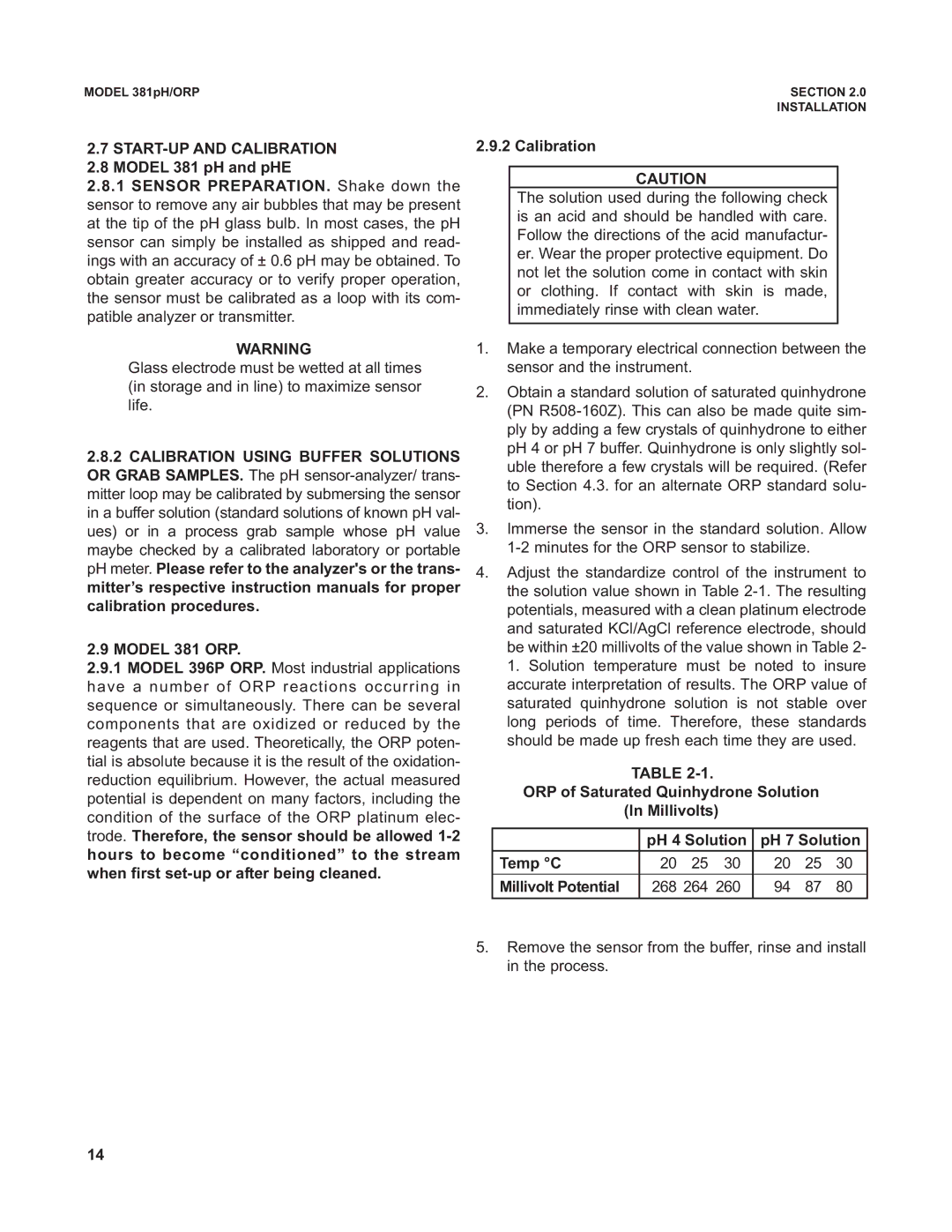
MODEL 381pH/ORP | SECTION 2.0 |
| INSTALLATION |
2.7START-UP AND CALIBRATION
2.8MODEL 381 pH and pHE
2.8.1SENSOR PREPARATION. Shake down the sensor to remove any air bubbles that may be present at the tip of the pH glass bulb. In most cases, the pH sensor can simply be installed as shipped and read- ings with an accuracy of ± 0.6 pH may be obtained. To obtain greater accuracy or to verify proper operation, the sensor must be calibrated as a loop with its com- patible analyzer or transmitter.
WARNING
Glass electrode must be wetted at all times (in storage and in line) to maximize sensor life.
2.8.2CALIBRATION USING BUFFER SOLUTIONS OR GRAB SAMPLES. The pH
2.9 MODEL 381 ORP.
2.9.1MODEL 396P ORP. Most industrial applications have a number of ORP reactions occurring in sequence or simultaneously. There can be several components that are oxidized or reduced by the reagents that are used. Theoretically, the ORP poten- tial is absolute because it is the result of the oxidation- reduction equilibrium. However, the actual measured potential is dependent on many factors, including the condition of the surface of the ORP platinum elec- trode. Therefore, the sensor should be allowed
2.9.2 Calibration
CAUTION
The solution used during the following check is an acid and should be handled with care. Follow the directions of the acid manufactur- er. Wear the proper protective equipment. Do not let the solution come in contact with skin or clothing. If contact with skin is made, immediately rinse with clean water.
1.Make a temporary electrical connection between the sensor and the instrument.
2.Obtain a standard solution of saturated quinhydrone (PN
3.Immerse the sensor in the standard solution. Allow
4.Adjust the standardize control of the instrument to the solution value shown in Table
TABLE
ORP of Saturated Quinhydrone Solution
(In Millivolts)
| pH 4 Solution | pH 7 Solution | ||||
|
|
|
|
|
|
|
Temp °C | 20 | 25 | 30 | 20 | 25 | 30 |
|
|
|
|
|
|
|
Millivolt Potential | 268 | 264 | 260 | 94 | 87 | 80 |
|
|
|
|
|
|
|
5.Remove the sensor from the buffer, rinse and install in the process.
14
